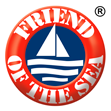Pesce spada
Leigh Fisheries
Species scientific name: Xiphias gladius
FAO area: 81
Fishing method: Long line
Basic description of the fleet/fishery
Fishery client: Leigh Fisheries
Fishing area: FAO 81; Pacific, Southwest – FMA Area 1, 2 and 9.
Fishing vessels: The Company has a fleet of 55vessels.
Vessels audited on site as fleet samples: 900855; 15878; 2024; 5876.
Fishing method: Long line.
Certified species:Scientific name / Common name
Xiphias gladius / Swordfish
Management summary
The Ministry for Primary Industries (MPI) manages New Zealand’s fisheries under a national fisheries plan. The cornerstone of New Zealand fisheries management is the Quota Management System (QMS). The most targeted species are regularly evaluated, while the bycatch species present a lack of information due to the low level of catches. All vessels maintain a logbook.. A Catch Landing Return (CLR) is recorded at every trip, indicating the target species and bycatches. CLR is delivered to the MPI office at the 15 of every month and it is matched with the declaration of the Licensed Fish Receivers.
Stock status summary
According to the MPI, Swordfish is reported as not overexploited and overfished.
Bycatch / discards
Bycatch is very low in long line fishing method. The main species caught by accidents are birds and the most common is the Black Petrel (Procellaria parkinsoni). The fishing vessels use a Tori line system to scare the birds, reducing catches to negligible numbers. There are no discards, since all fish caught is marketed by the unit of certification. All bycatch is recorded on the CLR.
Habitat Impact
The ecosystem impact of the fishery is taken into account in the assessment carried out by MPI. The fleet is just using passive gears that have no impact on seabed. The fishing devices are tagged with different marker buoys, which are set at a certain distance on the ling to prevent the loss of a piece of the line. All the skippers are committed to recover the fishing gears to avoid ghost fishing.
Social Accountability performance
The fleet complies with the human rights and labour regulations of New Zealand.
Conclusion with reasons for approval
The fleet complies with Friend of the Sea requirements, without any non-conformities.
Tropic Fishery (PVT) LTD
Species scientific name: Xiphias gladius
FAO area: 57
Fishing method: Long line
Basic description of the fleet/fishery
Fishery client: TROPIC FISHERY (PVT) LTD, Sri Lanka.
Fishing area: FAO 57, Indian Ocean.
Fishing vessels: The Company has a fleet of 16 vessels.
Vessels audited remotely: Li-IMUL-A-0036CBO; Li-IMUL-A-0046MTR; Li-IMUL-A-0068TCO; Li-IMUL-A-0098MTR.
Fishing method: Long line.
Certified species: scientific name / common name
Xiphias gladius / Swordfish.
Management summary
The Ministry of Fisheries and Aquatic Resources Development (MFARD) is the agency that manage fisheries in Sri Lanka. Fisheries activities are planned, administrated and monitored under the guidance of the Department of Fisheries and Aquatic Resources (DFAR). In addition, the Indian Ocean Tuna Commission (IOTC), an intergovernmental organisation, is responsible for the management of tuna and tuna-like species in the Indian Ocean. Fisheries management organisations are held annually, along with intermittent meetings with the scientific committee meeting, technical committee meeting and compliance committee meeting.
Stock status summary
Data from the lasted IOTC assessment reported that most of Sri Lanka’s fishing vessels are artisanal (< 24m). In addition, it reported that catches from the main fleet of Sri Lanka correspond to 13%, the stock is not overfished and it is not subject to overfishing. The organisation buys 100% of its purchase from small fishing vessels.
Bycatch / discards
The fishing gear used is the Deep-set Long line, which reduces the by-catch percentage. The logbook is used in all vessels and data are available on the DFAR and IOTC website. Evidence of minimal by-catch (targeted as incidental catch; there is no records of turtles and sharks). All fish caught, including by-catch and discards, are used for human consumption.
Habitat Impact
Currently, encouraged by government actions to reduce gill net fishing, most of the fishing are done by Long line. This fishing method has been selected so that the endangered species is not caught (> 100m depth Longline Deep-set). No degradation of seabed.
Social Accountability performance
The fleet complies with the human rights and Srilankan regulations.
Conclusion with reasons for approval
The fleet complies with Friend of the Sea requirements, without any major non-conformities.
Global Sea Foods
Species scientific name: Xiphias gladius
FAO area: 57
Fishing method: Hand line
Sri Lanka – Hand line – Xiphias gladius – FAO 57 (Indian Ocean, Eastern)
Fishery client: Global sea foods (Pvt) Ltd.
Website: www.gsffish.com
Fishing area: FAO 57, Eastern Indian Ocean waters.
Fishing vessels: The Company has a fleet of ___ vessels.
Vessels audited on site as fleet samples: A-0229 CHW; A-0191 CHW; A-0662 CHW; A-0398 CHW; A-0652 CHW; A-0010 CHW; -A-0833 MTR; A-1348 MTR.
Fishing method: Hand line.
Certified species: Scientific name: Xiphias gladius;
Common name: Sword.
Management summary
The Ministry of Fisheries and Aquatic Resources Development (MFARD) is the agency that manage fisheries in Sri Lanka. Fisheries activities are planned, administrated and monitored under the guidance of the Department of Fisheries and Aquatic Resources (DFAR). The government provides a logbook for each vessel.
Stock status summary
The Indian Ocean Tuna Commission (IOTC) is an Intergovernmental Organisation responsible for the management of tuna and tuna-like species in the Indian Ocean. According to IOTC data, fishing mortality is lower than mortality at Maximum Sustainable Yield (MSY). There are some opinions about the existence of two different stocks. In the case of the southwestern, a precautionary approach has been set by regulating the total amount catchable. The stock of the audited species is not overexploited and overfished.
Bycatch / discards
Bycatch species are not included in the IUCN Red list. The company has given training to skippers and boat owners regarding by catch reduction measures. Discarding percentage is less than 8%. All bycatch is recorded in the logbook. The Earth Island Institute approved the company for Dolphin-Safe certification.
Habitat Impact
All vessels are operating under a swordfish quota system, ranging from 15 to 50 kg. There is no fishing in Protected Marine Areas. In addition, there is no evidence of gears that could damage the seabed. Fishing occurs 300 to 400 km from the coast.
Social Accountability performance
The fleet complies with the human rights and national labour regulations.
Conclusion with reasons for approval
The fleet complies with Friend of the Sea requirements, without non-conformities.
Leigh Fisheries / Lee Fish
Species scientific name: Xiphias gladius
FAO area: 57
Fishing method: Hand line
Sri Lanka – Hand line – Xiphias gladius – FAO 57 (Indian Ocean, Eastern)
Fishery client: Lihini Sea Foods Pvt. Ltd.
Website: www.lihiniseafood.com
Fishing area: FAO 57, Eastern Indian Ocean waters.
Fishing vessels: The Company has a fleet of 64 vessels.
Vessels audited on site as fleet samples: A – 0434-KLT; A – 0687-CHW; A – 0611-CHW; A – 0635-CHW; A – 0474-NBO.
Fishing method: Hand line.
Certified species: Scientific name: Xiphias gladius;
Common name: Sword.
Management summary
The Ministry of Fisheries and Aquatic Resources Development (MFARD) is the agency that manage fisheries in Sri Lanka. Fisheries activities are planned, administrated and monitored under the guidance of the Department of Fisheries and Aquatic Resources (DFAR). There is regulation from Local Authority emphasizing only swordfish above 15 kg can be caught. Navy and fisheries Officer monitor logbook data.
Stock status summary
The Indian Ocean Tuna Commission (IOTC) is an Intergovernmental Organisation responsible for the management of tuna and tuna-like species in the Indian Ocean. According to IOTC data, the stock of the audited species is not overexploited and overfished.
Bycatch / discards
The fleet did not usually record information on bycatch and discards. The crew only reported that protected species (e.g., shark, dolphin and turtles), when caught, are released immediately at sea. The auditor identified the attitude as nonconformity. However, the problem has been solved and now the fleet records this data in the logbook.
Habitat Impact
The fleet did not monitor the effect of fishing gear on the seabed. The auditor identified the attitude as nonconformity. However, many references report that the side effect of the use of longline refers to incidental catch, with no effect on the seabed. There is no fishing in Marine Protected Areas, as reported on the Vessel Monitoring System (VMS) of all vessels.
Social Accountability performance
The fleet complies with the human rights and national labour regulations.
Conclusion with reasons for approval
Despite of major and minor non-conformities (concerns related to different procedures), the fleet complied with Friend of the Sea requirements. The procedure of non-conformity was closed when the company sent documents showing that the irregularities pointed out by the auditor were being corrected.
VS Seafood
Species scientific name: Xiphias gladius
FAO area: 57
Fishing method: Long line
Sri Lanka – Long line – Xiphias gladius – FAO 57 (Indian Ocean, Eastern)
Fishery client:
VS Seafood (Pvt) Ltd.
Website: www.vsseafood.com
Fishing area: FAO 57, Eastern Indian Ocean waters.
Fishing vessels: The Company has a fleet of ___ vessels.
Vessels audited on site as fleet samples: IMUL –A-0612 CHW; IMUL-A-0102 CBO.
Fishing method: Long line.
Certified species: Scientific name: Xiphias gladius;
Common name: Swordfish.
Management summary
The Ministry of Fisheries and Aquatic Resources Development (MFARD) is the agency that manage fisheries in Sri Lanka. Fisheries activities are planned, administrated and monitored under the guidance of the Department of Fisheries and Aquatic Resources (DFAR). There is regulation from Local Authority emphasizing only swordfish above 20 kg can be caught. There is a quota system for providing license to vessels. Navy and fisheries Officer monitor logbook data.
Stock status summary
The Indian Ocean Tuna Commission (IOTC) is an Intergovernmental Organisation responsible for the management of tuna and tuna-like species in the Indian Ocean. According to IOTC data, fishing mortality is lower than mortality at Maximum Sustainable Yield (MSY). The stock of the audited species is not overexploited and overfished. Still, IOTC continuously monitors the stock of the species for data collection and reporting, reducing the uncertainties in the assessments.
Bycatch / discards
Accidental catches are released alive to the sea at the time of the catch. The fleet is keeping records in the logbook and no accidental catches are included in the IUCN Red list. The level of discards does not exceed 8% of the total catch.
Habitat Impact
Each vessel has a Vessel Monitoring System (VMS), which is monitored by government authorities in order to control the intrusion of Marine Protected Areas. The fishery occurs approximately 400 to 450 km from the Sri Lanka shore. The long line is used at about 20 meters depth and there are specific bait to reduction of accidental catches and limit to specific catch.
Social Accountability performance
The fleet complies with the human rights and Sri Lankan labour regulations.
Conclusion with reasons for approval
The fleet complies with Friend of the Sea requirements, without any non-conformity.
Transmarina C.A.
Species scientific name: Xiphias gladius
FAO area: 87
Fishing method: Purse seine and long line
Ecuador – Purse seine, Long line – Xiphias gladius – FAO 87 (Pacific, Southeast)
Fishery client: TRANSMARINA C.A.
Website: www.transmarina.com
Fishing area: FAO 87, Southeast Pacific.
Fishing vessels: The Company has a fleet of 9 vessels.
Vessels audited on site as fleet samples: P-04-00575; P-04-00747; P-04-00827; P-04-00811; P-04-00826; P-04-00853; P-04-00822; P-04-00796; P-04-00788.
Fishing method: Purse seine and Long line.
Certified species: Scientific name: Xiphias gladius;
Common name: Sword.
Management summary
The Ministry of Agriculture, Livestock, Aquaculture and Fisheries of Ecuador (MAGAP) through its subsidiary unit, the Secretariat of Fisheries Resources (Subsecretaría de Recursos Pesqueros, SRP), is the government agency that manages fisheries in Ecuador. The SRP has offices in the main ports of Ecuador, where the tasks of inspection, control and monitoring of fishing activities are regularly conducted at landing harbors. SRP regulates fishing activity by allocating fishing permits both, fishers and vessels, by establishing fishing periods and bans, and by regulating fishing gears, tools, and fishing zones.
Stock status summary
According to the Inter-American Tropical Tuna Commission (IATTC), Swordfish stocks are healthy in the northeastern Pacific and southeastern Pacific. The stocks are not overfished. In addition, the spawning biomass ratio (SBR) is ~1.45, substantially above the level that is expected to produce catch at the level of maximum sustainable yield (MSY).
Bycatch / discards
The fishery is selective and the fishing gear is among the tools applied to prevent accidental catches. There is no evidence of small species, as well as the fishing gear prevents the capture of species less than 1.8kg. The level of discards is 6% of the total catch.
Habitat Impact
According to the auditor, there is no Marine Protected Areas in FAO area 87. The fishery occurs 200 miles from the shore and data fleet is recorded in the logbook. The fishing gears have no hooks and are used in at depths that do not allow damage to the seabed.
Social Accountability performance
The fleet complies with the human rights and Ecuadorian labour regulations.
Conclusion with reasons for approval
The fleet complies with Friend of the Sea requirements, without any non-conformity.



